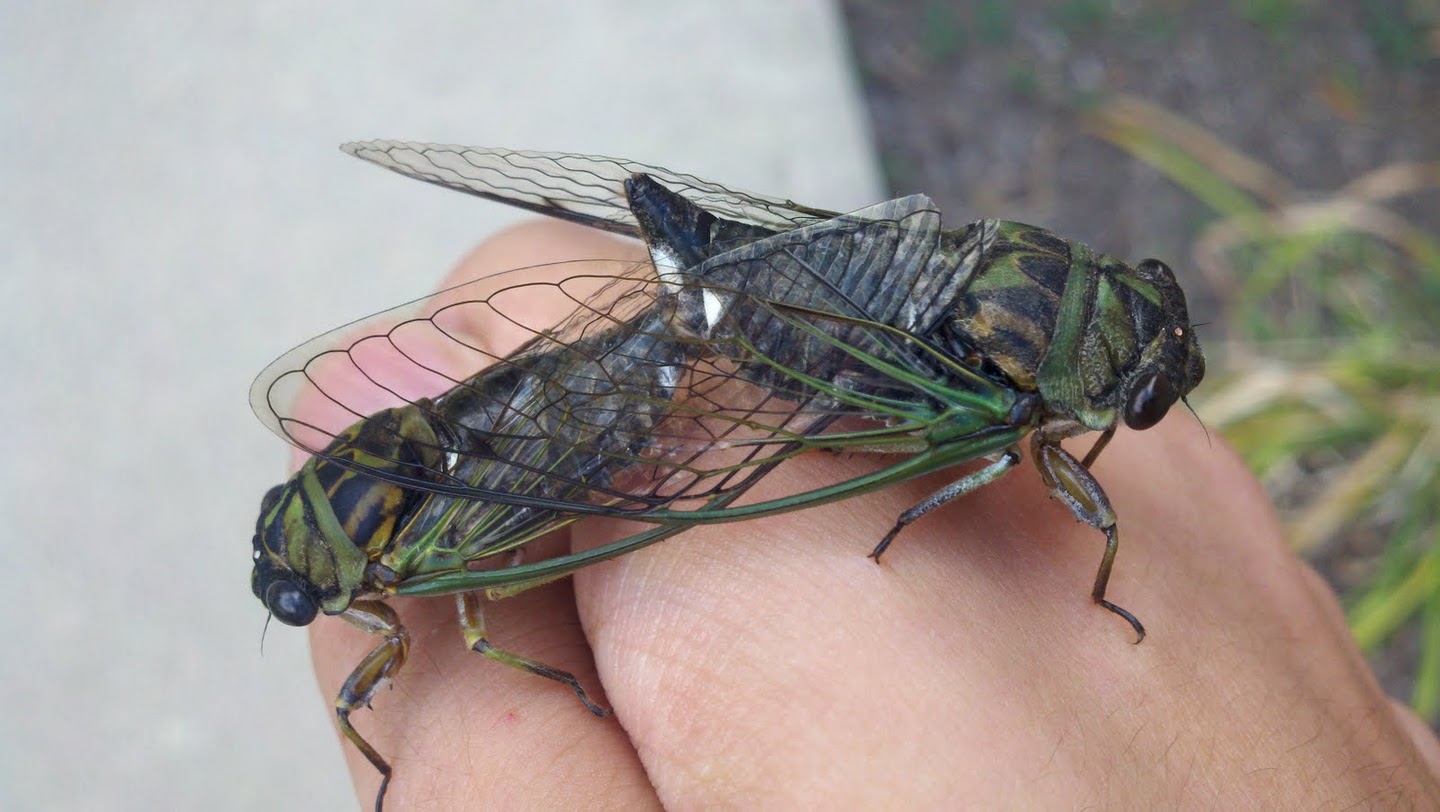Dog-day Cicada on:
[Wikipedia]
[Google]
[Amazon]
''Neotibicen canicularis'' (commonly called the dog-day cicada, dog-day harvestfly, or heatbug) is a species of
 ''Neotibicen canicularis'' is recognizable by being mostly black with green markings on its body. The body size is typically 27–33 millimeters, the wingspan can reach 82 mm. The wings are interlaced with green
''Neotibicen canicularis'' is recognizable by being mostly black with green markings on its body. The body size is typically 27–33 millimeters, the wingspan can reach 82 mm. The wings are interlaced with green
File:Dogday Cicada.JPG, Close-up of face showing Ocelli
File:Allison14Sep2022copy.tif, Pinned N. canicularis from Central GA
annual cicada
Annual cicadas are North American Cicadidae species that appear every summer. The life cycle of a so-called annual cicada typically spans 2 to 5 years; they are "annual" only in the sense that members of the species reappear annually. The name is u ...
.
Description
 ''Neotibicen canicularis'' is recognizable by being mostly black with green markings on its body. The body size is typically 27–33 millimeters, the wingspan can reach 82 mm. The wings are interlaced with green
''Neotibicen canicularis'' is recognizable by being mostly black with green markings on its body. The body size is typically 27–33 millimeters, the wingspan can reach 82 mm. The wings are interlaced with green veins
Veins are blood vessels in humans and most other animals that carry blood towards the heart. Most veins carry deoxygenated blood from the tissues back to the heart; exceptions are the pulmonary and umbilical veins, both of which carry oxygenated b ...
which are especially noticeable near the base. The song of ''N. canicularis'' is often described as being a loud, high-pitched whine much like a power saw
A saw is a tool consisting of a tough blade, wire, or chain with a hard toothed edge. It is used to cut through material, very often wood, though sometimes metal or stone. The cut is made by placing the toothed edge against the material and mo ...
cutting wood
Wood is a porous and fibrous structural tissue found in the stems and roots of trees and other woody plants. It is an organic materiala natural composite of cellulose fibers that are strong in tension and embedded in a matrix of lignin th ...
. It lasts for several seconds before fading away at the end of the noise. Its name "dog-day" refers to dog days of summer
The dog days or are the hot, sultry days of summer. They were historically the period following the heliacal rising of the star system Sirius (known colloquially as the "Dog Star"), which Hellenistic astrology connected with heat, drought, sud ...
, due to these insects often being associated with hot, humid, summer days.
Geographical locations
Common habitats are mixed anddeciduous
In the fields of horticulture and Botany, the term ''deciduous'' () means "falling off at maturity" and "tending to fall off", in reference to trees and shrubs that seasonally shed leaves, usually in the autumn; to the shedding of petals, aft ...
woods in Canada
Canada is a country in North America. Its ten provinces and three territories extend from the Atlantic Ocean to the Pacific Ocean and northward into the Arctic Ocean, covering over , making it the world's second-largest country by tot ...
and the Central and Eastern United States
The United States of America (U.S.A. or USA), commonly known as the United States (U.S. or US) or America, is a country primarily located in North America. It consists of 50 states, a federal district, five major unincorporated territorie ...
. Geographic range includes The Great Plains
The Great Plains (french: Grandes Plaines), sometimes simply "the Plains", is a broad expanse of flatland in North America. It is located west of the Mississippi River and east of the Rocky Mountains, much of it covered in prairie, steppe, an ...
of Canada and the United States, the Midwestern United States
The Midwestern United States, also referred to as the Midwest or the American Midwest, is one of four census regions of the United States Census Bureau (also known as "Region 2"). It occupies the northern central part of the United States. I ...
, The Great Lakes region, and New England
New England is a region comprising six states in the Northeastern United States: Connecticut, Maine, Massachusetts, New Hampshire, Rhode Island, and Vermont. It is bordered by the state of New York to the west and by the Canadian provinces ...
.
Gallery
References
Hemiptera of North America Insects described in 1841 Cryptotympanini {{Cicadidae-stub